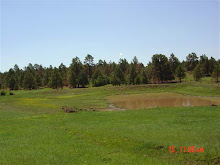By ROBERT D. McFADDEN
Published: February 7, 2010
A power plant under construction in central Connecticut exploded with earthquake force that shook homes across much of the state on Sunday as workers purged natural gas lines in preparation for the plant to open this year. At least five people were killed and more than two dozen were injured as a section of the plant collapsed and burned.
Skip to next paragraph
Enlarge This Image
Jessica Hill/Associated Press
The blast at the Kleen Energy Systems plant in Middletown occurred in the largest building, called the Power Block. Workers at the plant, which was under construction, were purging gas lines.
Multimedia
Related
Before Blast, Few Safety Problems as Energy Project Rose at Abandoned Mine Site (February 8, 2010)
Desperate Search for Victims of Explosion in Connecticut (February 8, 2010)
Enlarge This Image
Richard Messina/Hartford Courant, via Associated Press
River Road leading to the site was a tangle of fire trucks and rescue equipment.
Witnesses said the explosion at the Kleen Energy Systems plant in Middletown, 15 miles south of Hartford, occurred at 11:17 a.m. in a thundering convulsion of flames and smoke seen for miles around and felt as far away as cities and towns on the shore of Long Island Sound, 30 miles away.
As towering plumes of dark smoke poured into a dazzling blue sky, scores of ambulances, fire engines, police cars and helicopters streamed to the scene on the west bank of the Connecticut River on the southern outskirts of the city, the home of Wesleyan University.
Fire and rescue teams from Middletown, Durham, Portland, Cromwell and other towns converged as crews fought the blaze into the afternoon. Aerial pictures showed a smoking, sprawling riverside site with buildings housing generators, fuel tanks and other power equipment, topped by two smokestacks. The explosion apparently occurred in the largest building, called the Power Block, which was destroyed.
River Road leading to the site was a tangle of firefighting and rescue equipment. Flames were seen shooting from a pipeline after the blast, but the line was capped shortly after noon, officials said. Even so, scattered fires blazed and smoke billowed over the scene for hours, and search-and-rescue teams looked through the rubble for victims into the night. The search, with dogs, sound-detecting and thermal imaging equipment, could go on for days, officials said.
Mayor Sebastian N. Giuliano of Middletown, at a late-afternoon news briefing, said that five people were known to be dead, but he did not release names pending notification of their families. The son of one victim, Raymond Dobratz, 57, of Old Saybrook, a pipe fitter who had been working at the plant for a year, said his father had been killed.
Mayor Giuliano said the number of dead and injured remained unclear because the number of workers at the plant fluctuated, in part because so many subcontractors were involved. He said the workers had been purging gas lines all weekend.
He said that as many as 200 construction workers had been at the plant daily, though fire officials said only about 50 were on the job at the time of the explosion. The mayor said various contractors were being asked to identify workers at the site on Sunday. “We need to know who was there today,” the mayor said.
And while the cause of the blast remained undetermined, the mayor said that a natural gas explosion was “the assumed cause.” He added, “Terrorism has been ruled out.”
Mr. Giuliano said that many of the construction workers had been evacuated from the site before draining the lines of natural gas, as standard procedure, and he said there had been no previous accidents at the plant — “not so much as a hangnail,” he said. More>>>





